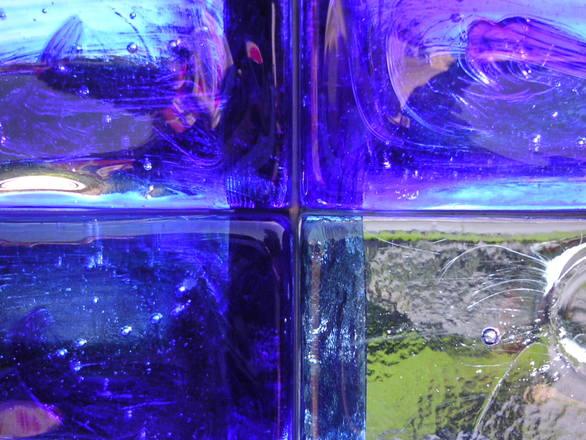10 Types of Glass used in the Glazing Industry
The glazing industry - whether you need to use glazing tools, lifting accessories, etc is full of terminology describing different types of glass which can sometimes get confusing. For example, do you know the difference between low-e and low iron glass?
Glass that hasn’t had any heat treatment or coatings applied to it is called “annealed glass”, this is the basic starting material which can undergo a variety of processes to make it stronger, safer, more energy efficient and more beautiful.
Here’s a glossary of ten common types of glass products which you might come across in homes, offices and other glazed structures...
Toughened/ tempered glass
Toughened or tempered glass has been heat-treated to make it more resistant to breakage. During the tempering process, the glass is heated to over 600°C then cooling it quickly which creates tension in the inner layer and compression on the outer surfaces.
This heat-strengthening treatment makes toughened glass twice as strong as annealed glass. Toughened glass is a safer alternative to untreated plate glass as when broken it crumbles into chunks rather than smashing into dangerous jagged shards.
Laminated glass
To make toughened glass even safer, it can be laminated by adding one or more interlayers of PVB (polyvinyl butryal). This resin binds the glass layers together even when they are broken, so a spider web of cracks will spread across the glass but it will not fall apart or fall out of its frame.
Laminated glass was invented by accident in 1903 in France when a glass flask became coated in a plastic substance and when dropped it shattered but stayed in one piece. Before being adopted by automobile manufacturers, laminated glass was used for gas mask eyepieces in World War 1.
Insulated glass
Insulated glass is more commonly known as IG, double glazing or triple glazing and helps to lower the amount of heat (on average 25%) that escapes through windows in buildings.
Two or three glass panes are separated by spacers to trap a layer of air in between them which reduces the amount of heat that can transfer through the glass.
Double glazed windows were invented in the 1930s but there is evidence that some Scottish homes had them in the 1870s to help keep the warmth inside during harsh winters.
Low-e glass
Low-emissivity, low-e, glass is a type of thermal, energy efficient glass which can help to insulate glazed building. It has a thin transparent coating which absorbs thermal energy and reflects it back into the building rather than letting it escape out through the colder external surface of the glass.
GGR Glass stock an E-Activ Glass Coating Detector which can detect when a low-e coating has been used on a glass unit. This pocket-sized device is often used to check that a window has been coated properly before installing it.
Fire resistant glass
Fire resistant glass is used to help contain a fire and create a safe escape route inside a building
Wired or wire mesh glass is a type of fire resistant glass which has metal wire embedded inside it. The wire mesh doesn’t make the glass stronger, but helps to hold it together when it cracks from thermal stress, as a more heat resistant alternative to a laminating material.
A more aesthetically pleasing alternative is transparent fire resistant glass which will also stay in place when it fractures. This multi-layered glass features an interlayer which foams up to create an insulating barrier which will absorb heat energy from a fire.
Self-cleaning glass
Self-cleaning glass features a special UV light activated coating which breaks down any dirt on the window’s surface. The dirt is then easily washed away by rain water to keep the windows looking clean, something which is particularly useful for hard to reach glass such as skylights.
This minimal maintenance glass is environmentally friendly as detergent is not required to clean it.
Pilkington launched the first commercial range of self-cleaning glass, the Activ™ range, in 2001. Our E-Activ Glass Coating Detector is also able to detect self-cleaning coatings.
Acoustic glass
Acoustic glass is used to help cut down on noise pollution inside buildings around noisy environments such as railways, factories and heavy traffic. It can even help cancel out the sound of rain impact on windows.
Laminated noise control glass reflects the sound back towards the source and absorbs it within the glass. An interlayer prevents the vibrating sound frequencies travelling from one pane to another.
Low iron glass
Low iron glass is an extra clear, almost colourless material which doesn’t have the green tone which other glass products have. This makes it ideal for letting a lot of natural light into a building or retail showroom, especially in places where the glass edges are visible.
Some of the iron used in glass manufacturing is replaced by other materials to create this extra transparent and brilliant glass.
Coloured glass
Coloured glass is often used for interior glazing and design features such as glass counter tops, kitchen back splashes and shower walls.
Opaque, coloured lacquered glass is made by baking a lacquer onto one side of the glass while enamelled glass is covered with a ceramic paint then heated up to toughen. Back painted glass is clear glass that is painted on the back side so the colour can be seen through the front surface.
Glass can also be “silvered” to create a mirror. A metal coating applied to one side of the glass then it is sealed with a protective coating.
Decorative glass
A range of techniques can be used to create decorative glass by adding texture to glass surfaces.
Acid-etching, also known as “French embossing”, is where a design is produced on the glass using acidic substances. Typically a colourless hydrofluorosilic acid is used, which is a mixture hydrofluoric acid with quartz powder, calcium fluoride and concentrated sulphuric acid.
Sandblasting gives glass a frosted appearance when its surface is blasted with aluminium oxide.






